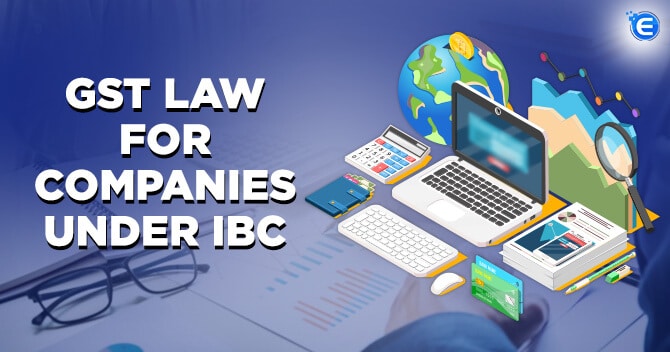View News
GST Implication on Asset Sale in IBC Liquidation Proceedings

Liquidation process is initiated under sec. 33 of the Insolvency and Bankruptcy Code, 2016 ("Code") when the Adjudicating authority (AA) either does not receive the Resolution Plan under Section 30(6) of the Code or the maximum period prescribed for corporate insolvency resolution process expires or in case where AA rejects the resolution plan under Section 31 of the Code. The Resolution professional (RP) may continue as liquidator after receiving consent
All assets of the Corporate Debtor (CD) form an estate of the assets, which is called the Liquidation Estate in relation to the CD. The liquidator holds the Liquidation Estate as a fiduciary for the benefit of all the creditors. The estate includes not only assets owned and in possession of CD, but also those not in possession. Assets listed in account books or with information utility, should be traced and taken in control. The proceeds from the sale of liquidation assets shall be distributed among the creditors in an order prescribed under sec 53 of the Code.
The relevant question before us is whether sale of the assets by the liquidator amounts to supply under GST?
Under GST, for transaction to be liable to tax, one must fall under the purview of “supply” defined in sec 7 of the CGST Act which is reproduced below
7. (1) For the purposes of this Act, the expression "supply" includes—
(a) all forms of supply of goods or services or both such as sale, transfer, barter, exchange, licence, rental, lease or disposal made or agreed to be made for a consideration by a person in the course or furtherance of business;
(aa) the activities or transactions, by a person, other than an individual, to its members or constituents or vice-versa, for cash, deferred payment or other valuable consideration. Explanation.—For the purposes of this clause, it is hereby clarified that, notwithstanding anything contained in any other law for the time being in force or any judgment, decree or order of any Court, tribunal or authority, the person and its members or constituents shall be deemed to be two separate persons and the supply of activities or transactions inter se shall be deemed to take place from one such person to another;
(b) import of services for a consideration whether or not in the course or furtherance of business; and
(c) the activities specified in Schedule I, made or agreed to be made without a consideration
(1A) Where certain activities or transactions constitute a supply in accordance with the provisions of sub-section (1), they shall be treated either as supply of goods or supply of services as referred to in Schedule II.
(2) Notwithstanding anything contained in sub-section (1),—
(a) activities or transactions specified in Schedule III; or
(b) such activities or transactions undertaken by the Central Government, a State Government or any local authority in which they are engaged as public authorities, as may be notified by the Government on the recommendations of the Council,
shall be treated neither as a supply of goods nor a supply of services
From the above, it can be seen that “Supply” covers many forms but it is unambiguous that the expression “supply” restricts to the 8 forms as mentioned in sec 7. Therefore, the concept of supply is not infinite even if an “inclusive” definition is used. However, even if the 8 forms are being continued with, the general words i.e. “and such other forms”, applying the principle of ejusdem generis, the other form shall partake the character/nature of the specific form. Hence in order to be liable to tax under GST, the transaction must be covered under any of the 8 forms to fall within the definition of “supply”
The liquidator is an insolvency professional on whom all the powers of the Board of Directors, key managerial personnel and the partners, as applicable, of the Corporate Debtor are vested by the Adjudicating Authority once the Liquidation order is passed under section 33 of the Insolvency and Bankruptcy Code, 2016. Section 35 of the Code enumerates the Powers and Duties of the Liquidator which includes selling the immovable and movable property and actionable claims of the corporate debtor in liquidation by public auction or private contract, with power to transfer such property to any person or body corporate. Here, Liquidator does not hold any title to the assets of the CD and only discharging his function vested by the order of NCLT for the benefit of the creditors and other stakeholders. Since, liquidator does not own any title to the assets of the CD, selling of those assets upon the order of the NCLT does not attract GST on liquidator.
Further, under Liquidation, CD absolute titles towards the liquidation estates are forfeited by the order of Liquidation to meet the obligation of creditors and other stakeholders. Here the CD rights towards the assets are extinguish by the operation of law. The question that arises here, is whether extinguishment of right by selling the assets under the operation of law on order by NCLT would attract GST?
As earlier stated, supply is restricted to 8 forms as expressed or mentioned in sec 7(1)(a) of CGST Act and do not have words like “and such other forms”. So, when Legislature has deliberately restrainted, it is not permissible to include every akin transaction to definition of “supply”.
Under New Zealand GST, it was held in the case ofDatabank Systems Ltd v Commissioner of Inland Revenue (NZ) (1987) 9 NZTC 6213 that "supply" means "to furnish or provide" –a voluntary act of provision is necessary. Relying upon the said judgment, under Australian GST, in Shaw v. Director of Housing and State of Tasmania (No. 2), [2001] TASSC 2, the Court stipulated that the term ‘supply’ requires a voluntary act by the supplier. In this case, the plaintiff was entitled to recover damages from the defendants for negligent misstatement. The Court noted that the obligation of a judgment debtor to pay a judgment sum, extinguished by the act of payment, did not constitute a supply because it did not depend upon any voluntary action on the part of the judgment creditor. Thus, there cannot be a supply constituted by a release of an obligation that occurs independently of the act of the releaser.
Further, GSTR 2006/9 issued by Australian Tax Office – Compulsory Acquisitions by Operation of Law In cases where land vests in the authority as a result of the authority seeking to acquire the land, and initiating the compulsory acquisition process pursuant to its statutory right, then the owner does not make a supply. This is because the owner does not provide anything to the authority. It takes no action to cause its legal interest to be transferred or surrendered to the authority. It has no obligation to do anything, to refrain from doing something or to tolerate an act or situation.
Thus, from the above, it can be inferred that the activity would qualify as “supply” only if a voluntary act is undertaken by supplier. Applying the above analogy, during liquidation, the CD lost the title to the assets under the order of Court and the title is conferred on acquirer by operation of law wherein voluntary act of the CD is absent. Therefore, the same does not fall under the purview of “supply”. However, in contrast to forfeiting title of assets and sale of such assets under the operation of law, wherein the CD itself approaches the NCLT bench, voluntary act of provision would be present and would fall under the purview of “supply”.
Further, the same question i.e. GST implication on sale of assets of CD by liquidator has been sought from theHon’ble West Bengal Advance Ruling Authority [TS-449-AAR-2020-NT] wherein it was held that sale of assets of CD by liquidator would amount to supply of goods and liable to discharge GST on it. The Hon’ble AAR has made the following judgments while pronouncing the same –
1. Sl. No. 4(a) of Schedule-II of the GST Act says, where goods forming part of the assets of a business are transferred or disposed of by or under the directions of the person carrying on the business so as no longer to form part of those assets, whether or not for a consideration, such transfer or disposal is a supply of goods by the person.
2. The liquidator is appointed under Section 34(1) of IBC after NCLT initiates liquidation in terms of Section 33 of IBC. As the applicant - the corporate debtor - is not a going concern, the liquidator is required to sell its assets under clauses (a) to (d) of Regulation 32 of the Insolvency and Bankruptcy Board of India (liquidation process) Regulations. The sale of the applicant’s assets like the plant and machinery, office equipment & furniture is, therefore, a supply of goods by the liquidator. Liquidator is required to take registration under Section 24 of the GST Act.
3. NCLT appoints the ‘resolution professional’ (hereinafter RP), as defined under Section 3(27) of IBC, as the liquidator subject to her consent. If she is already registered as a distinct person of the corporate debtor in terms of Notification No. 11/2020- Central Tax, dated 21-3-2020, she should continue to remain registered till her liability ceases under Section 29(1)(c) of the GST Act. It may be noted that the RP/liquidator acts as the authorized person of the corporate debtor. Once an insolvency professional takes registration as the authorized person of the corporate debtor, it remains in effect with suitable amendment in the certificate of registration if the status or person of the authorized person gets changed (refer to Circular No. 138/08/2020-GST, dated 6-5-2020).
In our view, the said judgment does not consider the facts in total and therefore should not get the merit because of the following reasons –
- While going through the Notification No. 11/2020-Central Tax, dated 21-3-2020 and circular no. 138/08/2020-GST, dated 6-5- 2020, it is clear that it is applicable on the RP/IRP wherein the management of the CD and its assets vest upon the RP/IRP to continue to run to business and operation of the said entity as a going concern till the insolvency proceeding is over. However, it does not cover the liquidation initiated u/s 33 of the Code since the role of liquidator and role of RP/IRP is different. Liquidation implies closure of business which is completely genre.
- The notification here provides special procedures for only those CDs that are undergoing CIRP and not for those who are already under the liquidation proceedings. So, irrespective of whether CIRP materializes or fails, the notification is silent with respect to continuation of new registration or revival of erstwhile registration.
- The facts are not clearly set out and consider by the Hon’ble AAR and only dig around schedule II sl. No. 4(a) i.e. Transfer of business assets and registration.
In conclusion, liquidation is a new genre which is yet to be covered under GST. Considering the current pandemic situation and number of companies undergoing CIRP and liquidation, a clarification from the department is a must to stop the pavement of new litigation.
Article Compiled By;-
CA Harsh Gadodia
Partner - Indirect Tax
M/s. Sumit Binani & Associates
(Formerly, M/s. Gadodia & Associates)
Mobile - 9830752489
E-mail - harshgadodia12@gmail.com

